#CC BY-NC-SA 4.0
Explore tagged Tumblr posts
Text
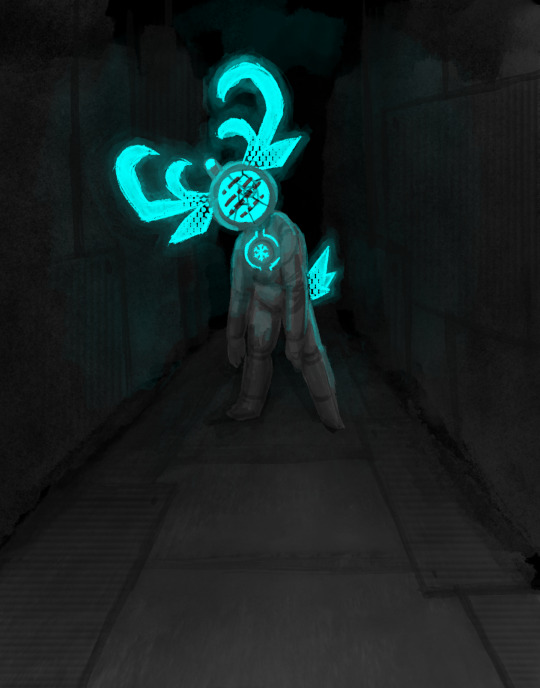
ERROR: INDEX_ID_OUT_OF_BOUNDS x43484950
INITIATING EMERGENCY PROTOCOL. TARGET ACQUIRED.
#robot#cyberpunk#horror art#glitch#error#pov: you messed up real bad#i want to start posting more miscellaneous oc/worldbuilding/story doodles. so have this#happy to take qs about characters from this setting (or any) but i'll refrain from elaborating unprompted for now#rootkit#32 system#oc#switch glitch#CC BY-NC-SA 4.0
55 notes
·
View notes
Text
Choose your fighter:
The Magnus Archives is a podcast distributed by Rusty Quill and is licenced under a Creative Commons Attribution-NonCommercial-ShareAlike 4.0 International license. Todays episode was written and performed by Jonathan Sims and directed by Alexander J. Newall for-
vs.
Deviser was written, preformed, edited, and directed by Harlan Guthrie. Original music and themes written and performed by Harlan Guthrie. This episode featured Henry Guthrie.
#CC BY-NC-SA 4.0 DEED my beloved#the magnus archives#tma#tma podcast#horror podcast#rusty quill#deviser podcast#deviser#harlan guthrie#truly a one man show#and we love him for it#podcast copypasta#Creative Commons Attribution-NonCommercial-ShareAlike 4.0 International license#podcast meme#horror podcast meme#apple.txt#👁️ | podcast tag
106 notes
·
View notes
Text

Need a tiny cephalopod to brighten your day? Meet the bobtail squid (Euprymna berryi)! Also known as the hummingbird squid, this critter typically grows only up to 2 in (5 cm) in length; females are larger than males. This species lives in Indo-Pacific waters, inhabiting the ocean floor where it burrows beneath sand to rest or hide when under threat. Its striking color comes from chromatophores, or pigment-holding cells, distributed throughout its body.
Photo:maractwin, CC BY-NC-SA 4.0, iNaturalist
#science#nature#natural history#animals#fact of the day#squid#cephalopods#cephalopod#did you know#ocean life#marine biology#marine life#cute animals
4K notes
·
View notes
Text

Sleeping owl on a branch against a full moon (Japan, 1830s-1840s) by Utagawa Hiroshige.
Woodblock print.
© The Trustees of the British Museum.
Creative Commons Attribution-NonCommercial-ShareAlike 4.0 International (CC BY-NC-SA 4.0) license.
369 notes
·
View notes
Text
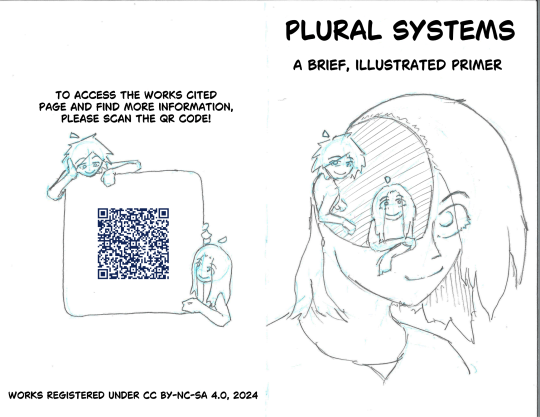




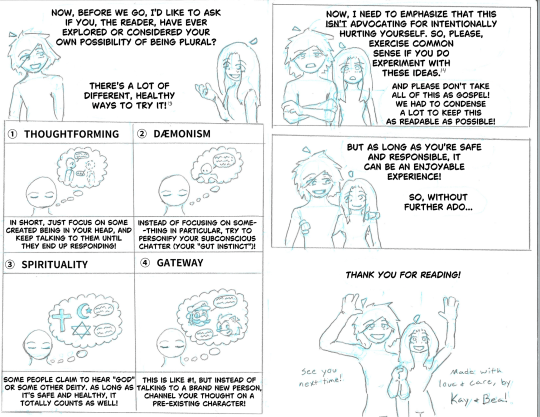
now that i have the copies printed & stapled for school, here's the plurality comic i've been working on for a while now. the whole process was excruciating in physical media but it felt really good just to have the tangible product in my hands. cc info under read more.
Plurality: A Brief, Illustrated Primer © 2024 by Kay & Bea is licensed under CC BY-NC-SA 4.0
#kaybee#character art#my ocs#art#pencil#plural art#plural artist#plurality#endo safe#endo friendly#anti endo dni
898 notes
·
View notes
Text

Submitted for classification by @liberhoe
"or perhaps the norway lemming, which is extremely aggressive and territorial"
Image by GRID-Arendal, CC BY-NC-SA 4.0
#norway lemming#lemming#rodent#mammal#submission#hmm. i'm taking the “extremely aggressive and territorial” into account when i make my vote
145 notes
·
View notes
Text

"Joe Spooky"
Infinite Painter.
My personal portrait of Jonathan Sims, the character voiced by Jonathan Sims in Jonathan Sims's famous podcast Jonathan Sims The Magnus Archives.
CC-BY-NC-SA 4.0.
#creative commons#digital art#painting#sketching#the magnus archives#jonathan sims#the archivist#portrait
76 notes
·
View notes
Note
Hey, weird question, but do you mind me using some of the images on your website for worldbuilding? (Long story short, i have a weird area featuring a messed up hourglass, and a lot of lizards, wich are old, and weird.)
Depends on the website. If you are talking about my homepage, www.markscherz.com, then you may use them for home games or stories, but not for commercial purposes. You can consider them licensed as CC BY-NC-SA 4.0.
If you are talking about markscherz.tumblr.com, then if the photos are my own, the policy is the same as above; if the photos are by someone else (usually indicated by either it being a reblog, or by a 'src' or 'x' in square brackets), then tumblr's model applies—the rights belong to the original source or poster, and you would have to ask them for permission.
77 notes
·
View notes
Text

little expressive piece that turned out cool
#furry#weirdfur#eyestrain#abstract#idk what else to tag this as lol#i guess it's a piece about mental illness but which one?? hell if i know#also i don't mess with the symmetry tool much. it's fun now and then#id is in alt text#CC BY-NC-SA 4.0
13 notes
·
View notes
Text
For #ILoveHorsesDay ❤️🐴:

Utagawa Yoshifuji (Japan, 1828–1887)
Assorted Horses, 1855
Color woodblock toy print (Omocha-e)
British Museum 1915,0823,0.388
(photo © The Trustees of the British Museum CC BY-NC-SA 4.0)
#animals in art#animal holiday#19th century art#Japanese art#East Asian art#Asian art#horse#horses#I Love Horses Day#print#woodblock print#ukiyoe#omocha-e#Utagawa Yoshifuji#British Museum#toy print#domesticated animals
43 notes
·
View notes
Text

Have you ever seen a prettier insect? With a wingspan of up to 2 in (5 cm), the rosy maple moth (Dryocampa rubicunda) can be found throughout North America; its range spans much of the United States' East Coast and parts of southern Canada. Nocturnal and solitary, its vibrant color provides camouflage among the fruits of red maple trees. This species can live for up to nine months in the wild.
Photo: diohio1, CC BY-NC-SA 4.0, i Naturalist
#science#nature#natural history#animals#fact of the day#did you know#entomology#moths#rosy maple moth#cool animals#insects
1K notes
·
View notes
Text

Bouquet of Camellias (1855) by an unknown artist.
Chromolithograph.
© The Trustees of the British Museum.
Creative Commons Attribution-NonCommercial-ShareAlike 4.0 International (CC BY-NC-SA 4.0) licence.
334 notes
·
View notes
Text
In the Studio: February 2024
This month has been a lot of boring background work, like moving my work studio from my dining room (80 sq ft) to my living room (150 sq ft). This means now there are two separate workspaces so I can bring in a helper and work without constantly bumping elbows. (Now I just have to hire a helper)
My mom has been lovely in helping me move things, stop and think about it, and decide to move them into entirely different places. Partly because I get fatigued really easily and could almost always do with a break, we always stop banging and clanging when Emily-cat comes out of the bedroom to pet her and promise we don't want to take away all her places to snooze and hide. We're just shifting them around a bit.
I also had one of those moments where I needed to create something for myself or I was going to scream. Which happens sometimes. So I grabbed a design from a 1919-1920 home decor stencil catalog I have and cut a version in removable vinyl for my wall. Here it is, 99% finished, on my newly installed makeup table (cupboard door from ReStore & intricately painted Ikea shelf brackets no one will ever see)
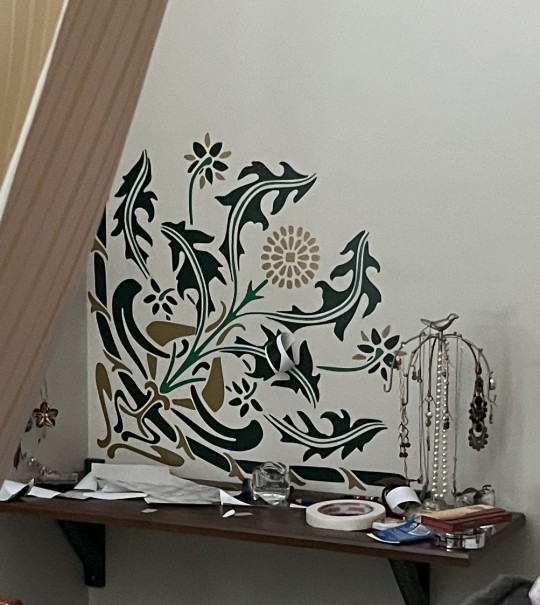
It's an art-nouveau dandelion, which I've never seen before and think is just really frigging cool.
And yes, I know I could try to monetize these images since they're out of copyright and I had to work to make the grainy base image into a better stencil, but like... I am le tired. I have to market so many things. SVGs on Etsy are up for all of five minutes before someone else traces your listing photo and sells it in a bundle with a bunch of other stolen art. I just want to share something small and lovely. Here you go.
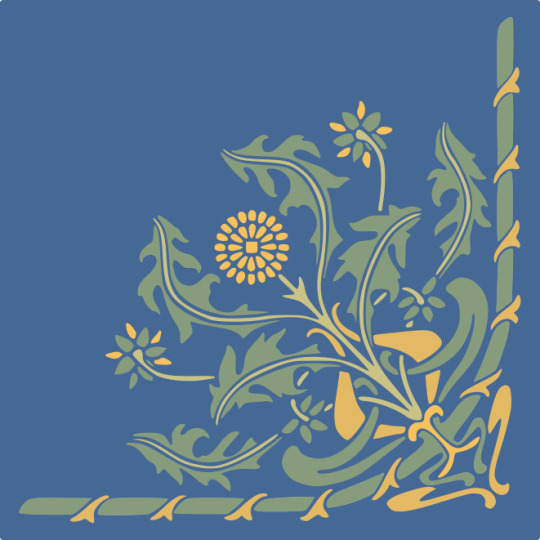
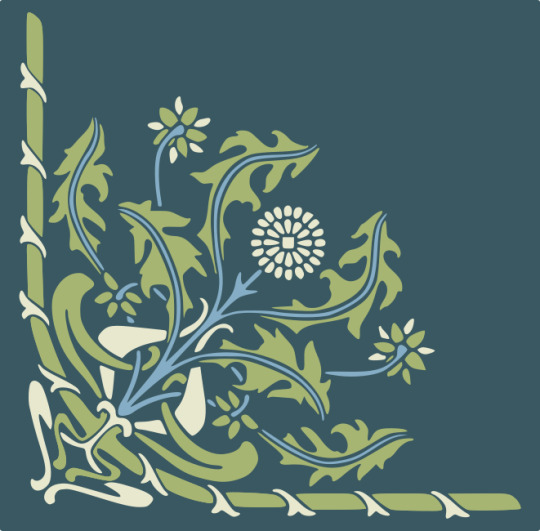
This work is licensed under CC BY-NC-SA 4.0
53 notes
·
View notes
Text
A Simple Introduction to Otherkin and Therianthropes
“A Simple Introduction to Otherkin and Therianthropes,” by Orion Scribner. Version 2.4.6, updated February 11, 2023. (CC BY-NC-SA 4.0)
This short piece of writing is for anyone to start learning about us therianthropes and otherkin. The piece uses only common words and simple sentences. Readers can put it into other languages more easily.^1 The statistics come from surveys that had a sample size greater than one hundred people. The endnotes and references give the origins of all the information.
Some real people are therianthropes and otherkin. We say that we are something other than human. For example, one of us who says, “I am a wolf.” The most common sorts of creatures for us to be are wolves, elves, and dragons. This is always an important part of who we are.^2 These are not characters we invented for play in a game.^3 It is not something we do simply for amusement.^4 It is a real part of us. It is an experience that we have without trying.^5 It is also an identity, because it is what we are.^6
Most of us sometimes have thoughts and feelings that are more similar to our animal side.^7 Some of us have thoughts and feelings that we are part animal all the time.^8 78% of us have instincts that most people do not have.^9 For example, the desire to use body language similar to what our sort of creature uses. We choose what we do with our instincts. We are responsible for what we do, the same as anyone else. Instincts are not an excuse for doing bad things.^10 We know that our bodies never change form. No one can change their body into an animal form. No one has magic powers that go against the laws of physics.^11
We each make our own discovery of how and why we are therianthropes or otherkin. Nobody is able to do that for someone else. Only you can know who you are.^12 Many of us knew that we were other than human before we had heard of anybody else who did.^13
Here is how our communities started. In 1990, a group made the word “otherkin” for themselves. It comes from the words “other kinds.”^14 In 1994, another community took up the word “therianthrope” for themselves. It means “animal person.”^15 The two communities came to have knowledge of each other later, in about 1996.^16 The oldest similar groups have put out writings since 1973.^17
Usually, therianthropes are animals, whereas otherkin are creatures from mythology. This is not a rule. Many therianthropes are creatures from mythology.^18 33.4% of otherkin say they are beings from fiction.^19
What do we look like? Other people only know that we are otherkin or therianthropes if we say that we are. We are women, men, and others.^20 We are young and old.^21 We come from many nations and ethnic groups.^22 We know that we look human. All living people in the world who look human are members of the only living species of human.^23 We have complicated opinions about using the words “human” or “not human” for ourselves.^24 Fewer than 4% of us have unusual sorts of body modifications.^25 What we own or wear does not make us therianthropes and otherkin. We enjoy getting things that look like our sort of creature, though.^26
Many of us see our experiences as therianthropes and otherkin as spiritual. Many of us say our spirits are of a different sort of creature.^27 However, some of us believe that our spirits are the same as anyone’s.^28 Some of us do not believe in spirits.^29 44% of us say we were a different sort of creature in a past life.^30 However, some of us have no memories of past lives, or do not believe in past lives.^31 Some of us prefer explanations that come from psychology instead of spirituality.^32
Therianthropes and otherkin are not a religion.^33 We have whichever religion we each desire. Many of us are members of Christianity, Judaism, Paganism, Buddhism, or other religions.^34 Some of us have no religion.^35 There are no leaders of the therianthrope or otherkin communities.^36
We go about our lives in the same ways as other people do.^37 Our experiences as otherkin and therianthropes give us ideas for important choices we make in our lives. For example, in our education and the work we do for a living.^38 We find people who love us for who we are.^39 Therianthropes and otherkin are neither better nor worse than other people.^40
Mental health professionals say that being a therianthrope or otherkin is not a mental illness.^41 Many of us have normal mental health.^42 The same as in any group of people, some of us have mental illnesses or disabilities.^43 Neither good nor bad health is necessary for us to be otherkin or therianthropes.
In short, otherkin and therianthropes are real people for whom being other than human is always a part of who they are. Our communities have been in existence for tens of years. Many sorts of people are therianthropes and otherkin. Each of us has our own ideas of how and why we are this way. Some of our explanations for this come from spirituality or psychology. We are not a religion, an illness, a look, or a game.
About the writer: Orion Scribner is a dragon otherkin. More than ten years ago, they wrote a history book about the otherkin and therianthrope communities, the Otherkin Timeline.
(The main version of the “Simple Introduction” is seven pages long. I created this shorter version of that post so that it is easier to reblog. In this version, please click “keep reading.” Then you will see the next four pages of endnotes and references. I cited many sources.)
Endnotes
1. This piece of writing is in Simple English. It is not obedient to all the rules of Basic English. All the words in here are common enough to be in a small dictionary. Other than the words “therianthropes” and “otherkin,” anyway.
2. These are simpler words for part of the best definition of “therianthropes.” Sonne wrote it in “Terms and definitions.” It is also true about otherkin.
3. These say it is not an invented character: Baker-Whitelaw, Golden Spirit, Jakkal (“Therianthropy…”), Lupa (pp. 27, 108-109).
4. See Katmandu and Tiernan.
5. Mokele first gave a definition of “therianthropes” saying it is an experience. This is also true of otherkin.
6. See Citrakayah and Baxil.
7. See Baker-Whitelaw and Jakkal (“Therianthropy…”).
8. See Sonne.
9. These statistics come from a survey by Shepard (“Abnormal instincts”). Therianthropes, otherkin, and similar sorts of people took the survey.
10. See Jakkal (“Introduction…”), Katmandu, and Lupa (p. 234, 249-250). A survey by Shepard has proof (“Abnormal instincts,” pp. 24-25).
11. See Clegg (p. 404) and Golden Spirit.
12. Most introductions to otherkin and therianthropes say this. About otherkin, see the Crisses, Golden Spirit, and Tiernan. About therianthropes, see Jakkal (“Introduction…”) and Katmandu. See also Lupa (pp. 243-245).
13. For more information about this part of self discovery, see Baker-Whitelaw, Katmandu, Kusani, and Tiernan.
14. For more, read my history book, the Otherkin Timeline. For information about the origin of this word, see Arethinn.
15. See the book by House of Chimeras.
16. From House of Chimeras (pp. 14, 27).
17. For more information about earlier groups, see my Otherkin Timeline.
18. For proof from community history that therianthropes are not only animals, see Daski.
19. The statistic comes from a survey by Shepard (“2021 Nonhumanity…”, raw data).
20. Some surveys find that more of us are women than men. All surveys find some others who are not simply men or women.
21. Usually, surveys find most of us in our teens and twenties. For one example, we see this in survey results by Clegg (p. 407-408). Year after year, this happens in our surveys. Older people have been in our communities for many years. Younger people have a greater tendency to take the surveys.
22. As Proctor says, surveys find that we live “on all continents … except Antarctica'' (pp. 72-73). For statistics on which ethnic groups are common among us, see Dinocanid.
23. For an explanation of how scientists know this, see Gould (pp. 322-322). Understanding this fact is important for stopping racism and false science. See Gould (pp. 24-25, 113-145).
24. About those complicated feelings, see the writings by Ilrak, Kin Speak, and Proctor (pp. 8, 108, 361).
25. The statistic come from a survey by Shepard (“2021 Nonhumanity…,” p. 12).
26. See Baker-Whitelaw.
27. Nearly all introductions to therianthropes and otherkin talk about how we have the belief that our spirits are not human. For example, see the Crisses, Jakkal (“Therianthropy…”), and Lupa (p. 27).
28. See the writings about this by a therianthrope named Kusani, and an otherkin named Tiernan.
29. See Citrakayah.
30. The statistic comes from Lupa’s survey of otherkin, therianthropes, and similar people (p. 287). Nearly all introductions to therianthropes or otherkin say that many have the belief that they were other than human in a past life. See Akhila, Baxil, the Crisses, Golden Spirit, and Lupa (pp. 57-66).
31. See the Crisses and Kefira.
32. See Akhila and Lupa (pp. 80-86).
33. One of the few things that our communities are in agreement about is that we are not a religion. See Golden Spirit, Lupa (p. 30), and Proctor (pp. 94-95).
34. About how we each have religions as we desire, see Lupa (pp. 30-31, 211-214). About otherkin who say this, see Baxil and Golden Spirit. About therianthropes who say this, see Citrakayah.
35. See Kefira.
36. See Baxil and Proctor (p. 94).
37. See Akhila, Baker-Whitelaw, Golden Spirit, Ilrak, and Lupa (p. 37).
38. See Lupa (p. 240).
39. See the Polyrhythms.
40. Therianthropes say this. For example, see the writings by Akhila and Katmandu. Otherkin say this, too. See Baker-Whitelaw, Baxil, and Golden Spirit.
41. For examples of mental health professionals giving us this advice, see Baker-Whitelaw and Lupa (pp. 86, 261-262).
42. See Akhila, Baxil, and Lupa (pp. 85-86).
43. See Akhila and Lupa (p. 259).
References
Akhila. “‘Different’ isn’t ‘insane.’” Thébaïde. September 2005. Accessed September 9, 2022. https://akhila.feralscribes.org/2005/different-isnt-insane/ Archived October 16, 2021. https://web.archive.org/web/20211016202558/https://akhila.feralscribes.org/2005/different-isnt-insane/
Baker-Whitelaw, Gavia. “Understanding the otherkin.” The Kernel. February 22, 2015. Archived March 18, 2015. https://web.archive.org/web/20150318110839/http://kernelmag.dailydot.com/issue-sections/features-issue-sections/11866/otherkin-tumblr-definition-pronouns/
Baxil. “The Draconity FAQ.” Tomorrowlands. 1998. Accessed November 14, 2022. http://www.tomorrowlands.org/draconity/faq/index.html
Citrakāyaḥ. “A skeptic’s guide to therianthropy.” Spirit of the Wind. No date, before February 20, 2015. Accessed December 4, 2022. https://citrakayah.ucoz.org/index/a_skeptic_39_s_guide_to_therianthropy/0-40 Archived February 20, 2015. https://web.archive.org/web/20150220005108/https://citrakayah.ucoz.org/index/a_skeptic_39_s_guide_to_therianthropy/0-40
Clegg, H., Collings, R., and Roxburgh, E. C.. “Therianthropy: Wellbeing, Schizotypy, and Autism in Individuals Who Self-Identify as Non-Human.” Society and Animals, 27(4), 2019, pp. 403-426. doi: https://doi.org/10.1163/15685306-12341540
Crisses, the, ed., “Otherkin FAQ v 4.0.1.” February 8, 2001. Accessed September 5, 2022. http://kinhost.org/res/Otherfaq.php Archived September 27, 2021. https://web.archive.org/web/20210927165832/https://kinhost.org/res/Otherfaq.php
Daski. “Therian: Dispelling the Earthen Animal Myth.” The River System. August 17, 2022. Accessed September 5, 2022. https://theriversystem.neocities.org/essays/EarthenMyth.html Archived August 17, 2022. https://web.archive.org/web/20220817021646/https://theriversystem.neocities.org/essays/EarthenMyth.html
Dinocanid. “POC survey results!” Dino’s Corner. August 24, 2021. Accessed December 4, 2022. https://dinocanid.tumblr.com/post/660444385413087232/
Golden Spirit and MistWolf. “FAQ Otherkin Hispano & Noctalium.” Otherkin Hispano. No date. Accessed September 5, 2022. https://otherkin-hispano.foroactivo.com/t108-faq-otherkin-hispano-noctalium Archived September 5, 2022. https://web.archive.org/web/20220905022917/https://otherkin-hispano.foroactivo.com/t108-faq-otherkin-hispano-noctalium
Gould, Stephen Jay. The Mismeasure of Man. New York: W. W. Norton & Co., 1981. https://www.worldcat.org/title/964237978
House of Chimeras. A Timeline of the Therianthrope Community. November 19, 2021. Accessed February 2, 2023. https://houseofchimeras.neocities.org/Nonfiction-Articles
Ilrak. “Triple consciousness.” Radiant Obscurities. April 2021. Accessed November 13, 2022. https://obscurities.sonverrid.org/2021/05/06/triple-consciousness/
Jakkal. “Introduction to the Newbie’s Guide.” Shifters.org. October 6, 2001. Archived October 28, 2002. https://web.archive.org/web/20021028114201/http://www.shifters.org/newbies/introduction.asp
Jakkal. “Therianthropy- an overview." Shifters.org. October 6, 2001. Archived November 10, 2002. https://web.archive.org/web/20021101165313/http://www.shifters.org/overview/therianthropy.asp
Katmandu. “Insta-weres, Part I & II.” Shifters. No date, about 1999. Archived March 5, 2001. https://web.archive.org/web/20010305233827/http://www.shifters.org:80/newbies/katmandu1.shtml
Kefira. “Life and religion.” Thébaïde. December 2004. Accessed September 7, 2022. https://akhila.feralscribes.org/2004/life-and-religion/ Archived September 18, 2021. https://web.archive.org/web/20210918064554/https://akhila.feralscribes.org/2004/life-and-religion/
Kin Speak. “Non-human.” Kin Speak. October 30, 2011. Accessed November 14, 2022. https://kinspeak.tumblr.com/post/12122639053/non-human Archived December 14, 2018. https://web.archive.org/web/20181214163147/https://kinspeak.tumblr.com/post/12122639053/non-human
Kusani. “Soulskins.” Thébaïde. January 2007. https://akhila.feralscribes.org/2007/soulskins/ Archived February 20, 2015. https://web.archive.org/web/20150220035229/https://akhila.feralscribes.org/2007/soulskins/
Lupa. A Field Guide to Otherkin. Stafford, England: Immanion Press, 2007. https://www.worldcat.org/title/137242792
Mokele. “The Experiential Nature of Therianthropy.” The Jungle. No date, about 2004. Archived February 19, 2005. https://web.archive.org/web/20050219234157/http://www.therianthropy.org/mokele/essays/exp.htm
Polyrhythms, the. “Loving someone with all your soul: Having an otherkin significant other.” Otherkin Alliance. No date, about 2012. Archived November 29, 2012. https://web.archive.org/web/20121129104209/http://main.otherkinalliance.org/articles/general-otherkin/loving-someone-with-all-your-soul-having-an-otherkin-significant-other/
Proctor, Devin. On Being Non-Human: Otherkin Identification and Virtual Space. The George Washington University. May 2019. https://search.proquest.com/openview/e156c24bf65c4efb0918a8db37433cce/
Scribner, Orion. Otherkin Timeline. Updated September 8, 2012. https://frameacloud.com/nonfiction/
Shepard, Page. “The 2021 Nonhumanity and Body Modification/Decoration Survey Results Breakdown.” Three Dragons and a Dog. August 28, 2021. Accessed December 4, 2022. https://invisibleotherkin.neocities.org/files/BodyModification-DecorationSurveyResults.pdf
Shepard, Page. “Abnormal Instincts: Statistics and Solutions (18+ Panel).” Three Dragons and a Dog. August 9, 2022. Accessed December 4, 2022. https://invisibleotherkin.neocities.org/Lectures.html
Sonne. “Terms and definitions.” Project Shift. Written 2008. Updated 2021. Accessed September 15, 2022. https://projectshift.therianthropy.info/terms-definitions-by-sonne/
Tiernan. “From the heart out.” Otherkin.net: Harmony and Discord. October 8, 2002. Archived November 2, 2004. https://web.archive.org/web/20041102205227/http://www.otherkin.net/articles/heartOut.html
#otherkin#therianthrope#therian#therianthropy#original post#Simple English#screen reader friendly#rated G#simple intro#A Simple Introduction to Otherkin and Therianthropes#my art and writing
219 notes
·
View notes
Text

This design is free to use by anyone! (CC BY-NC-SA 4.0)
i dont think i posted this one
#art#my art#digital art#character design#artists on tumblr#original character#character illustration#drawing#cc by nc#oc#f2u#mothcore#human oc
10 notes
·
View notes
Photo




バビロニアの世界最古の地図「イマゴ・ムンディ」を解読、ノアの箱舟伝説と酷似した記述を発見 公開:2024-11-03・更新:2024-11-03
著者konohazuku・パルモ
「イマゴ・ムンディ」はおよそ2600年前(3000年前という説も��に作られたバビロニアの世界地図だ。
粘土板に描かれたその地図はすでに多くが失われ、現存するのは一部のみだが、大英博物館にあるそのかけらから、最近新たな発見があった。
裏面に刻まれた楔形文字の解読が進み、聖書のノアの箱舟伝説と酷似する大洪水物語が描かれていたことがわかったのだ。
1882年、現在のイラク、バグダッド近郊、かつてのバビロニアの都市シッパルで発見されたこの地図は、専門家たちが今日に至るまで、その謎を解明すべく、様々な研究が行われている。
古代バビロニアの世界最古の地図 手のひらよりわずかに大きいこの粘土板には、世界最古の地図が描かれている。
「よく見ると二重の円が描かれていて、そこに楔形文字で〝苦い川〟と記されているのがわかります」 大英博物館のキュレーター、アーヴィング・フィンケル博士は説明する。
二重円の内側には、メソポタミアを表す水域の境界線に囲まれたバビロンがある。そして、ユーフラテス川とバビロン自体を含むいくつかの主要都市が境界内に描かれている。
この画像を大きなサイズで見る 写真:(左)1925年、B・マイスナーによるバビロニアとアッシリアのスケッチ、(右)偽色彩法のために疑似着色されたもの image credit:Left; Bruno Meissner/Public Domain, Right; FlorinCB/CC0 既知の世界の向こうには、山か遠くの神秘的な土地を表したと思われる三角形が描かれている。
この場所は異世界の特徴と関連していて、フィンケル博士はこれを「魔法と謎に満ちた場所」と言っている。
まわりに刻まれた碑文は、ある奇妙な土地について述べている。そこは太陽がけっして輝かず、宝石のような木々が育ち、飛べない巨大鳥が歩き回るところだという。
フィンケル博士は、周囲の8つの三角形がつくる領域がバビロニアにおける日常を超えた異世界のネットワークを形成していることに注目している。
この画像を大きなサイズで見る バビロニアの世界地図「イマゴ・ムンディ」のかけら image credit:The British Museum/SketchFab/CC BY-NC-SA 4.0 ADVERTISING
ノアの箱舟を思わせる古代の洪水物語の記述を発見 粘土板の裏面は、見知らぬ土地へのガイドになっていて、冒険者が未知への旅で遭遇するであろう事柄を述べて��る。
ある箇所には、第4の三角形に到達するには「7つのリーグを通過し��くてはならない」とあり、「その先にはパルシクトゥの船ほどの分厚いものを見つけるだろう」という。
パルシクトゥという聞きなれない単語は、船の正確なサイズを示していて、ほかのバビロニアの粘土板、とくに巨大な箱舟のような建造物に関するバビロニアの洪水物語の中でのみ見られる。
この船はバビロニアの伝説の王ウトナピシュティムによって建造された。王は家族やさまざまな生き物を洪水から救うために、エア神の支持に従って船を建造したとされ、まるでノアの箱舟の話を思わせる。
「イマゴ・ムンディ」の碑文には、ウラルトゥという山にたどり着いたこの古代の箱舟のことが詳しく語られている。
聖書では、ノアの箱舟も同じように「アララト」の地にたどり着いたとされていて、専門家はこれがバビロニア人がウラルトゥと呼んだ山と同じだと考えている。
この話はノアの箱舟とまるで同じです。もちろん、一方がもう一方につながったのです(フィンケル博士)
バビロニア人にとって箱舟の旅は歴史の事実で、それが彼らの宇宙観と地理に反映されたのだ。
この画像を大きなサイズで見る アララト山のノアの箱舟、シモン・デ・マイル(1570年) image credit:WIKI commons メソポタミアの洪水伝説とその影響 バビロニアの洪水伝説は、ノアの箱舟話だけでなく、ほかの古代中東の洪水物語とも酷似している。
これは、異なる文明の間でも大洪水の文化的記憶が共有され、互いに影響を与えあっていたことを示している。
ギルガメッシュ叙事詩の洪水物話は、およそ3000年前の粘土板で知られているが、聖書のノアの洪水物話は約5000年前にさかのぼる。
これら文明の神話の間に古くから深く根づいたつながりがあることがはっきりわかる。
フィンケル博士は、このような大洪水の発生や、そこから生き残り、最終的に山の上で箱舟の残骸を目撃する話は、バビロニア人にとって単なる伝説ではなく、それが彼らの世界観や宇宙観に織り込まれたものであることだと説明する。
「イマゴ・ムンディ」の地図はこの物語を文字通りに象徴的に表していて、その描写は既知の世界の境とそれを超えた世界の始まり、つまり伝説と想像の場所の始まりを表しているというのだ。
The Babylonian Map of the World with Irving Finkel | Curator’s Corner S9 Ep5 知識と伝説が絡み合う興味深い地図 古代にバビロニアと聖書の洪水物語がつながっていたという今回の発見によって、ノアの箱舟と舟がたどり着いたアララト山の山の位置をめぐる論争が再燃している。
アララト山の遺跡を調査してきたイスタンブール工科大学の研究者たちは、海底粘土と古代��らの活動の証拠を発見した。その時期はおよそ3000~5000年前にさかのぼるという。
ここからまた、古代の洪水がこの土地��景観を形作り、こうした洪水伝説発生のきっかけになったのかどうかという疑問が出てきている。
シドニー大学のアンドリュー・スネリング博士は、洪水が起こるまではアララト山は存在せず、箱舟がそこに到達することは不可能だったと主張している。
歴史家の多くは、ノアの箱舟の話は歴史的事実ではなく象徴的な物語だとみなしているが、「イマゴ・ムンディ」のような遺物やその他文献の発見は、こうした物語が、現実に起きた出来事から生まれた可能性に心惹かれる人々の興味をそそり続けている。
「イマゴ・ムンディ」は、バビロニア人の世界と宇宙に対する認識を明らかにするだけでなく、中東の古代文化が大洪水という共通の文化記憶を共有して、粘土板に永遠に刻みつけていたことを裏付けている。
References: A new finding on the 3,000-year-old Babylonian Map of the World reveals the legendary tale of an ark and a Great Flood, drawing parallels with the Biblical story of Noah's Ark.
あわせて読みたい
4000年前の粘土板を解読、月食にともなう王の死と破滅の予言が刻まれていた
怪物や謎が満載!2600年前に作られた世界最古の世界地図「イマゴ・ムンディ」
古代メソポタミアのレンガが3000年前の地磁気異常を記録していた
古代バビロニアの文章を解読できるAIを開発。ギルガメシュ叙事詩の一部や賛歌を解読
世界最古の幽霊か?3500年前の古代バビロニアの粘土板に記された幽霊画 #考古学 #遺物 #地図 #世界最古 #解読
(バビロニアの世界最古の地図「イマゴ・ムンディ」を解読、ノアの箱舟伝説と酷似した記述を発見|カラパイアから)
11 notes
·
View notes